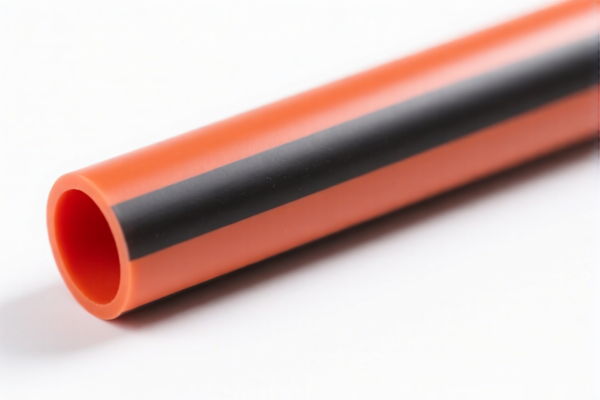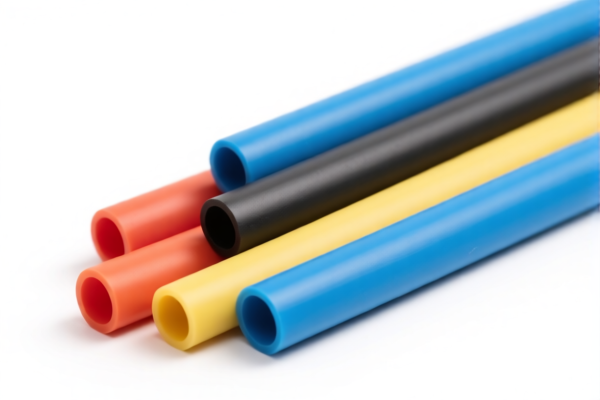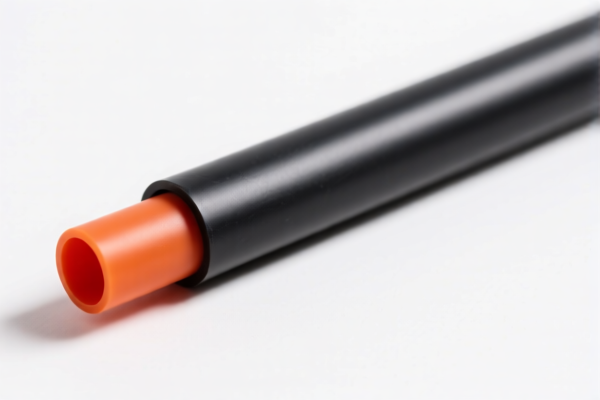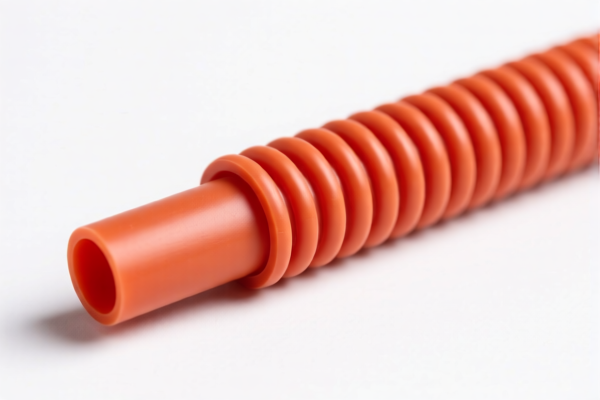| HS Code | Official Doc | Tariff Rate | Origin | Destination | Effective Date |
|---|---|---|---|---|---|
| 8422909160 | Doc | 55.0% | CN | US | 2025-05-12 |
| 8536700000 | Doc | 55.0% | CN | US | 2025-05-12 |
| 3920995000 | Doc | 60.8% | CN | US | 2025-05-12 |
| 8419899580 | Doc | 59.2% | CN | US | 2025-05-12 |
| 8422409181 | Doc | 55.0% | CN | US | 2025-05-12 |
| 3901105020 | Doc | 61.5% | CN | US | 2025-05-12 |
| 7507200000 | Doc | 58.0% | CN | US | 2025-05-12 |
| 3920100000 | Doc | 59.2% | CN | US | 2025-05-12 |




Here is the structured classification and tariff information for heat shrink tubing and related products, based on the provided HS codes and tax details:
🔍 Product Classification Overview: Heat Shrink Tubing and Related Components
✅ HS CODE: 3920995000
Description: Plastic films, usually non-cellular plastic, used as packaging material and combined with other materials.
- Base Tariff Rate: 5.8%
- Additional Tariff: 25.0%
- April 11 Special Tariff (after April 11, 2025): 30.0%
- Total Tax Rate: 60.8%
- Note: This code may apply to heat shrink tubing made of plastic, especially if it is used in packaging and combined with other materials.
✅ HS CODE: 3901105020
Description: Low-density polyethylene (non-linear).
- Base Tariff Rate: 6.5%
- Additional Tariff: 25.0%
- April 11 Special Tariff (after April 11, 2025): 30.0%
- Total Tax Rate: 61.5%
- Note: This code applies to raw materials used in the production of heat shrink tubing (e.g., LDPE).
✅ HS CODE: 7507200000
Description: Heat shrink nickel tubes.
- Base Tariff Rate: 3.0%
- Additional Tariff: 25.0%
- April 11 Special Tariff (after April 11, 2025): 30.0%
- Total Tax Rate: 58.0%
- Note: This code applies to metallic heat shrink tubing (e.g., nickel-based).
✅ HS CODE: 8419899580
Description: Equipment for heat shrinking plastic materials.
- Base Tariff Rate: 4.2%
- Additional Tariff: 25.0%
- April 11 Special Tariff (after April 11, 2025): 30.0%
- Total Tax Rate: 59.2%
- Note: This code applies to machines or devices used to process heat shrink tubing (e.g., heat shrink ovens).
✅ HS CODE: 8422409181
Description: Other packaging or wrapping machines (including heat shrink packaging machines).
- Base Tariff Rate: 0.0%
- Additional Tariff: 25.0%
- April 11 Special Tariff (after April 11, 2025): 30.0%
- Total Tax Rate: 55.0%
- Note: This code applies to machinery used in the packaging process, including heat shrink packaging machines.
✅ HS CODE: 8422909160
Description: Parts of heat shrink packaging machines.
- Base Tariff Rate: 0.0%
- Additional Tariff: 25.0%
- April 11 Special Tariff (after April 11, 2025): 30.0%
- Total Tax Rate: 55.0%
- Note: This code applies to components of heat shrink packaging machines.
✅ HS CODE: 8536700000
Description: Connectors for fiber optic cables or cables.
- Base Tariff Rate: 0.0%
- Additional Tariff: 25.0%
- April 11 Special Tariff (after April 11, 2025): 30.0%
- Total Tax Rate: 55.0%
- Note: This code applies to connectors used in fiber optics, not directly related to heat shrink tubing but may be used in related applications.
✅ HS CODE: 3920100000
Description: Plastic sheets, films, foils, etc., usually laminated or combined with other materials.
- Base Tariff Rate: 4.2%
- Additional Tariff: 25.0%
- April 11 Special Tariff (after April 11, 2025): 30.0%
- Total Tax Rate: 59.2%
- Note: This code may apply to heat shrink tubing if it is made of plastic and laminated or combined with other materials.
📌 Proactive Advice for Importers:
- Verify Material: Confirm whether the heat shrink tubing is made of plastic (e.g., LDPE), metal (e.g., nickel), or a composite material.
- Check Unit Price: Tariff rates may vary based on the declared value and classification.
- Certifications Required: Ensure compliance with any required certifications (e.g., RoHS, REACH, or industry-specific standards).
- April 11, 2025 Deadline: Be aware of the special tariff increase after this date. Plan your import schedule accordingly.
- Anti-Dumping Duties: If the product is made of iron or aluminum, check for any applicable anti-dumping duties.
Let me know if you need help with customs documentation, classification confirmation, or tariff calculation tools. Here is the structured classification and tariff information for heat shrink tubing and related products, based on the provided HS codes and tax details:
🔍 Product Classification Overview: Heat Shrink Tubing and Related Components
✅ HS CODE: 3920995000
Description: Plastic films, usually non-cellular plastic, used as packaging material and combined with other materials.
- Base Tariff Rate: 5.8%
- Additional Tariff: 25.0%
- April 11 Special Tariff (after April 11, 2025): 30.0%
- Total Tax Rate: 60.8%
- Note: This code may apply to heat shrink tubing made of plastic, especially if it is used in packaging and combined with other materials.
✅ HS CODE: 3901105020
Description: Low-density polyethylene (non-linear).
- Base Tariff Rate: 6.5%
- Additional Tariff: 25.0%
- April 11 Special Tariff (after April 11, 2025): 30.0%
- Total Tax Rate: 61.5%
- Note: This code applies to raw materials used in the production of heat shrink tubing (e.g., LDPE).
✅ HS CODE: 7507200000
Description: Heat shrink nickel tubes.
- Base Tariff Rate: 3.0%
- Additional Tariff: 25.0%
- April 11 Special Tariff (after April 11, 2025): 30.0%
- Total Tax Rate: 58.0%
- Note: This code applies to metallic heat shrink tubing (e.g., nickel-based).
✅ HS CODE: 8419899580
Description: Equipment for heat shrinking plastic materials.
- Base Tariff Rate: 4.2%
- Additional Tariff: 25.0%
- April 11 Special Tariff (after April 11, 2025): 30.0%
- Total Tax Rate: 59.2%
- Note: This code applies to machines or devices used to process heat shrink tubing (e.g., heat shrink ovens).
✅ HS CODE: 8422409181
Description: Other packaging or wrapping machines (including heat shrink packaging machines).
- Base Tariff Rate: 0.0%
- Additional Tariff: 25.0%
- April 11 Special Tariff (after April 11, 2025): 30.0%
- Total Tax Rate: 55.0%
- Note: This code applies to machinery used in the packaging process, including heat shrink packaging machines.
✅ HS CODE: 8422909160
Description: Parts of heat shrink packaging machines.
- Base Tariff Rate: 0.0%
- Additional Tariff: 25.0%
- April 11 Special Tariff (after April 11, 2025): 30.0%
- Total Tax Rate: 55.0%
- Note: This code applies to components of heat shrink packaging machines.
✅ HS CODE: 8536700000
Description: Connectors for fiber optic cables or cables.
- Base Tariff Rate: 0.0%
- Additional Tariff: 25.0%
- April 11 Special Tariff (after April 11, 2025): 30.0%
- Total Tax Rate: 55.0%
- Note: This code applies to connectors used in fiber optics, not directly related to heat shrink tubing but may be used in related applications.
✅ HS CODE: 3920100000
Description: Plastic sheets, films, foils, etc., usually laminated or combined with other materials.
- Base Tariff Rate: 4.2%
- Additional Tariff: 25.0%
- April 11 Special Tariff (after April 11, 2025): 30.0%
- Total Tax Rate: 59.2%
- Note: This code may apply to heat shrink tubing if it is made of plastic and laminated or combined with other materials.
📌 Proactive Advice for Importers:
- Verify Material: Confirm whether the heat shrink tubing is made of plastic (e.g., LDPE), metal (e.g., nickel), or a composite material.
- Check Unit Price: Tariff rates may vary based on the declared value and classification.
- Certifications Required: Ensure compliance with any required certifications (e.g., RoHS, REACH, or industry-specific standards).
- April 11, 2025 Deadline: Be aware of the special tariff increase after this date. Plan your import schedule accordingly.
- Anti-Dumping Duties: If the product is made of iron or aluminum, check for any applicable anti-dumping duties.
Let me know if you need help with customs documentation, classification confirmation, or tariff calculation tools.
Customer Reviews
No reviews yet.